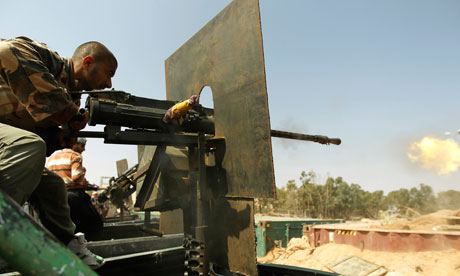
Jimm Motyka
Infowars.com
May 30, 2011
In Mid-may of this year, something curious happened, which I’d not seen before.
I’ve been following the course of where the dollar was heading and how it related to the pricing of gold and silver. Typically, I follow a number of sources for information, then try to wrap all those opinions into something concise, allowing me to share it with others. Most everyone following precious metals knows how GATA has been beating the drum about gold manipulation for quite some time now. History (past and current) is a very good place to start down the rabbit trail.
Informed people (like Paul Craig Roberts, Bob Chapman, Gerald Celente, Robby Noel, Lindsey Williams) have also helped shape a number of my opinions and speculations regarding where this economy is heading. Again, these are all very credible individuals who’ve been reporting on “real” financial issues for a number of years, if not decades now. And, even though it can be a bad habit, tune into the mainstream media to hear what they are trying to make the public believe for that moment. Every so often, they slip and report factual info. My process is listening closely and then pulling all the commonalities into something concise that is easy for others to understand.
Those who may have heard or recalled my public launch into this area was when I was a guest on The Power Hour Radio Show (on the Genesis Communication Network), discussing the possibility of the Amero, a few years ago. Since that interview, there are some things that I’ve now recognized as trial balloons and a number of things that are credible, heading for an eventual reality. I’m not fully convinced that the Amero won’t happen (namely due to the SPP agreement, which has it as one of its outcomes), but I do believe a number of things discussed on that show are still very viable and coming more into focus. My thoughts on silver are still very much in play, but I’ll discuss that in a bit.
The process of informing people is much like talking to your neighbor, yet in this case, my neighborhood became much bigger than I could’ve ever imagined. I was very blessed to have The Power Hour as an outlet. This is the way I explain how I collect my information.
Imagine you’re heading on vacation. You get everything ready for your trip (how you’ll get there, what to wear, projected weather reports), depending on the destination. You research places to stay, looking for the best fit for your stay. You talk to people about where you are going and get their real life experiences of going there. Sometimes, no one has been there before, so you search for tangible reasons as to why you still are going there. This is a huge key. If no one you know has been there before, then you have the opportunity to go there and inform them later, if they are to ask you about it. On your collective experience (what you saw, what you ate, where you stayed, what you did, did you enjoy it), you now have something you are well-informed on and can share that with others. In short, this is my process in collecting and sharing info. So, here’s some of the info that I still believe was viable from that 2008 interview:
1.) The federal reserve note, known as the U.S. dollar, is going into decline in both our country and around the world. (At that time, I was thinking we would see the Amero.)
2.) If/when the new currency comes to replace the U.S. dollar, it will take five of the current dollars to obtain three denominations/units of the new currency. (This was based on conversations with sources, who didn’t know I was researching this info about the Amero.)
3.) If you could not get out of your IRA or 401K, make certain you’re holding gold and silver mining shares only.
4.) Even though all eyes were on gold, silver was definitely the place for greater returns.
Point #4 is the main reason for this article.
In May of this year, APMEX (American Precious Metals Exchange) sent out an interesting e-mail regarding new silver rounds they are now offering. APMEX is now minting silver in tenth ounce and quarter ounce denominations. Although I think the over spot costs on the rounds is too high, I certainly took notice.
Let’s consider the facts we already know. Gold is at an all time high (although suppressed due to manipulation). Many people have told me that it is priced so high, even the smaller fractional pieces are too expensive for them. Although the central reason for the spike in gold prices is due to the declining U.S. dollar, let’s go with the point that gold is not an affordable option for many people, especially newer investors. Therefore, people are looking at silver as their investment safe haven due to its affordability. So, what is the importance in seeing fractional silver in denominations of tenth ounce and quarter ounce sizes.
My own common sense tells me that there’s going to be an eventual tipping point where silver is going to a valuation that gold is currently at. My thought is that APMEX is seeing the writing on the wall and capitalizing on it in advance. Certainly, this is not an advertisement for APMEX, but is could definitely show a trend that could be on the horizon.
Earlier this year, when I was on The Power Hour talking about silver in 2011, I was pretty confident in saying that I thought it would be at $68 an ounce by year’s end. I also mentioned that I was being conservative. From what I recall hearing on the Peter Schiff Radio Show, Schiff once mentioned that Constitutionally an ounce of gold should equate to twenty ounces of silver. In doing the math from current gold prices, my estimation was very conservative, yet felt to be a realistic number. So then, where is this heading?
Stock up with Fresh Food that lasts with eFoodsDirect (Ad)
I believe that fractional silver is not going to be a trend, but will be the rule in the coming year. Reports are already out that silver is not easy to currently find or obtain. Silver’s applications supersede just a monetary precious metal due to its importance in industrial and commercial applications. Although it’s nicknamed as “poor man’s gold”, something is definitely afoot here. Again, I’m basing my statements on the commercial appearance of tenth ounce and quarter ounce fractional denominations.
If and when other minting companies follow suit, you’ll have already had a heads up. The financial collapse storm is coming. Unlike stocks in the stock market, gold and silver have never gone to zero. Please keep that thought in the back of your head and thanks for reading this.
Jimm Motyka’s post first appeared on his blog, Jimmy On The Spot.











 Jens C. Kolbjørnsen
Jens C. Kolbjørnsen